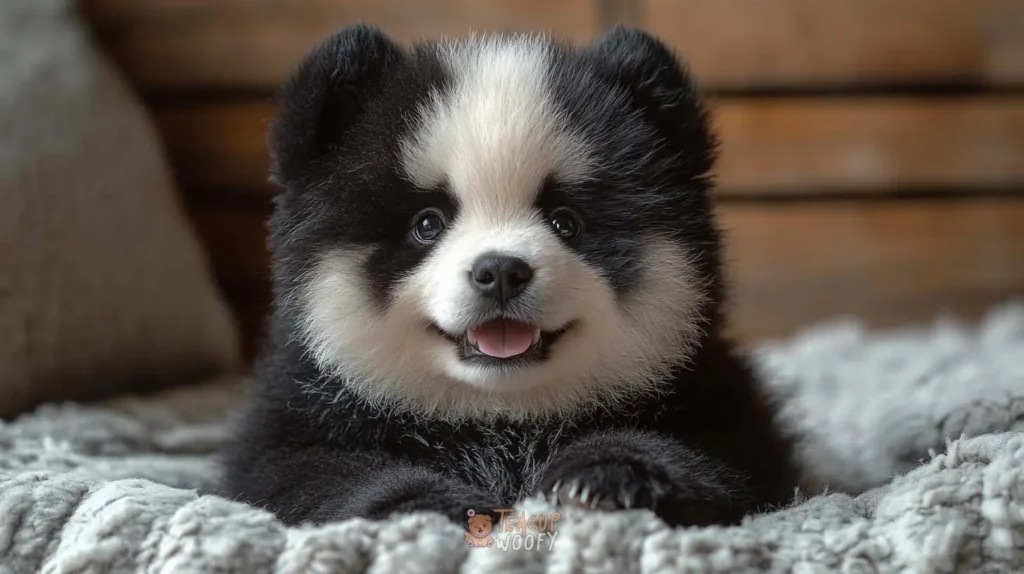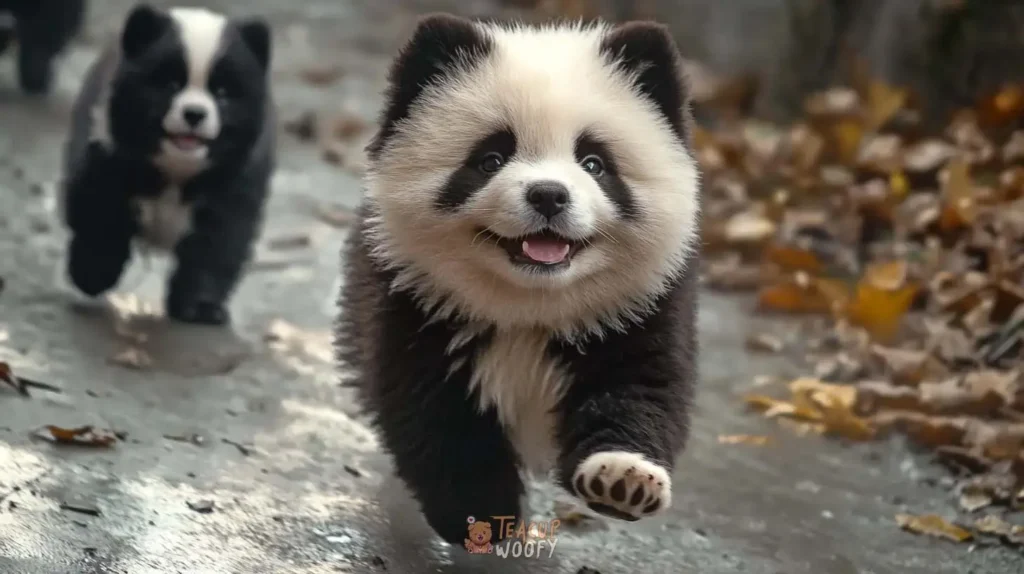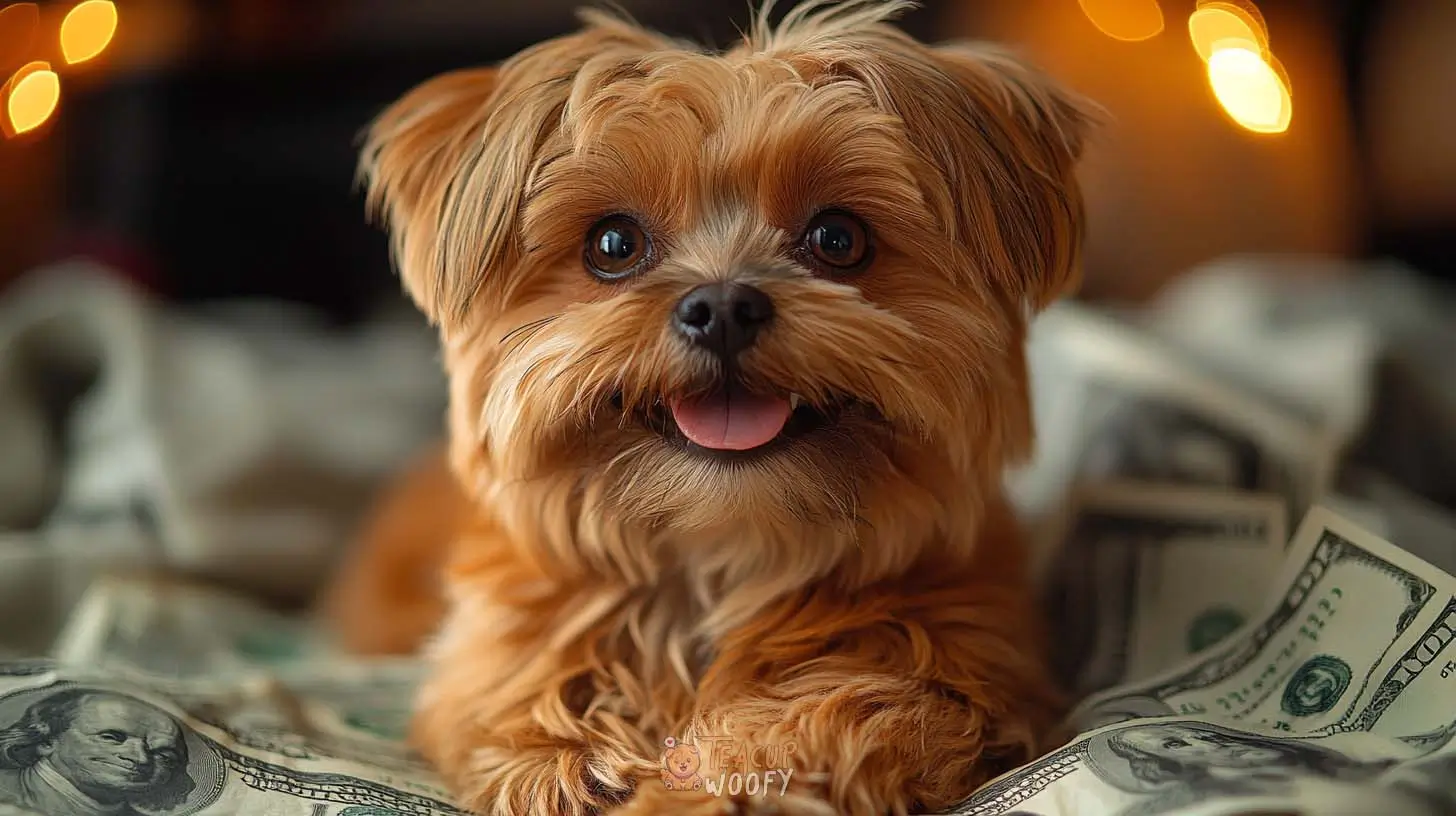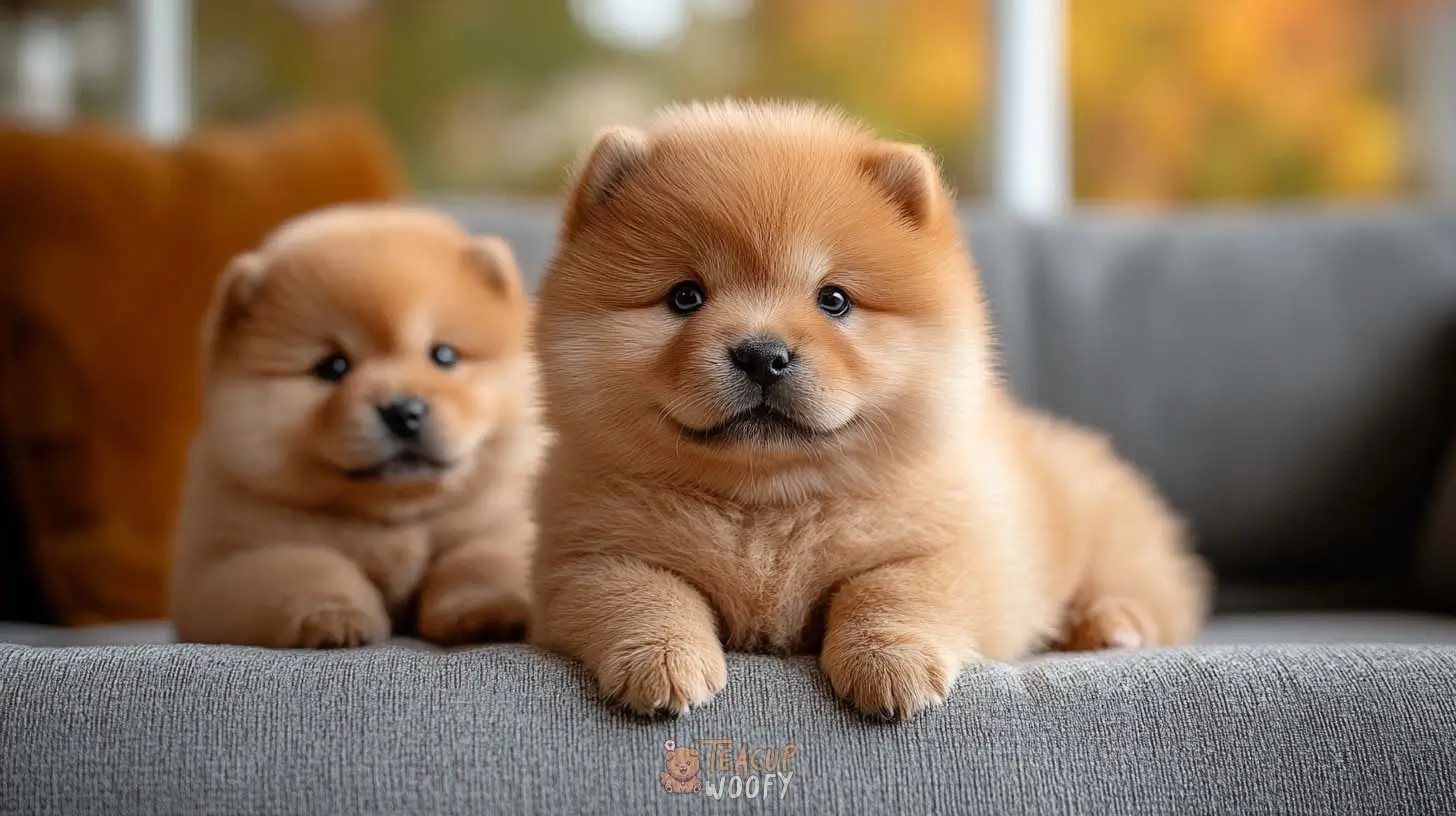Lately, the internet has been buzzing about the teacup panda chow chow dog, often shown in photos that look almost too cute to be real. But here’s the truth: this isn’t an official dog breed. What most people call a chow teacup or panda chow is actually a Chow Chow that has been styled, groomed, or even dyed to resemble a panda.
The idea became popular in China, where some zoos presented these panda-like dogs to attract visitors. While the look is eye-catching, experts confirm that the teacup panda chow chow dog does not naturally exist. Instead, it’s a creative but controversial twist on the traditional Chow Chow, a breed known for its lion-like mane and ancient Chinese roots.
Teacup Panda Chow Chow dog Full Guide Origin & History

The story of the teacup panda dog starts with the Chow Chow, an ancient Chinese breed that has been around for more than 2,000 years (AKC). Known for their lion-like mane, deep-set eyes, and sturdy build, Chow Chows were originally bred as guard dogs and companions in northern China.
Fast forward to recent years, the Chow Chow became the center of a trend when some breeders and groomers styled them to resemble pandas. This led to the viral nickname teacup panda dog, especially when smaller-sized Chow Chows, sometimes marketed as chow teacup, were groomed or dyed with black and white markings.
The trend gained global attention in 2014 when a zoo in China presented Chow Chows painted as panda cubs, sparking both fascination and criticism. Since then, photos and videos of panda-styled Chow Chows have continued to circulate online, though no kennel club recognizes them as a separate breed.
In reality, the teacup panda dog is not a naturally occurring type, but rather a creative interpretation of the Chow Chow’s look, blending grooming techniques with the rising demand for toy- and teacup-sized pets.
Teacup Panda Chow Chow dog Size & Appearance

At first glance, the teacup panda dog looks like a panda cub come to life, thanks to the fluffy coat and black-and-white styling. In reality, these are Chow Chows (sometimes smaller or marketed as chow teacup) with unique grooming or dyeing.
Coat Variants
- Natural Chow Chow coats come in red, black, blue, cinnamon, and cream (AKC).
- The “panda” look is achieved through grooming and coloring, not genetics. Dogs may be trimmed and dyed with black patches around the eyes, ears, and legs to resemble pandas.
- Coat types include:
- Rough coat: thick, wooly undercoat with a coarse outer coat.
- Smooth coat: dense, shorter fur with less fluff.
Growth and Weight Chart for Chow Teacup Dogs
Since there is no officially recognized “teacup” Chow Chow, most growth charts are based on standard Chow Chows. Smaller or runty puppies may be marketed as “chow teacup,” but they still generally follow the same growth pattern, just on the lighter side.
Male Chow Chow Growth
| Age | Weight | Height |
| 3 months | 15–20 lbs | 10–12 in |
| 6 months | 30–45 lbs | 13–15 in |
| 12 months | 50–70 lbs | 17–20 in |
Female Chow Chow Growth
| Age | Weight | Height |
| 3 months | 12–18 lbs | 9–11 in |
| 6 months | 28–40 lbs | 12–14 in |
| 12 months | 45–60 lbs | 17–19 in |
Teacup Panda Dog Reality
- A genuine chow teacup would be significantly smaller than these numbers, usually under 20–25 lbs, but that size typically comes from selective breeding of smaller parents or runts, not a true breed standard.
- The teacup panda dog is therefore a visual concept, not an official category, a Chow Chow groomed to mimic a panda, sometimes smaller than average, but rarely “teacup” in the strict sense.
Growth and Full Size of a Teacup Panda Dog
When Will the Dog Stop Growing?
A standard Chow Chow typically reaches full height by around 12 months and fills out in weight by 18 months (AKC). Smaller versions marketed as chow teacup or styled as teacup panda dogs usually stop growing earlier, around 9–12 months, since they are bred from the smallest puppies in a litter.
What Is the Size of a Full-Grown Dog?
- Standard Chow Chow: 17–20 inches tall and weighing 45–70 pounds (dogacademy.org).
- Female Chow Chow: slightly smaller at 45–60 pounds.
- Chow Teacup / Teacup Panda Dog (marketed size): typically under 20–25 pounds with a much shorter height, though this is not officially recognized by kennel clubs.
So, while photos of a “full-grown teacup panda dog” may make it look like a miniature panda cub, what you’re really seeing is a small Chow Chow groomed and dyed for the panda effect, not a genetically distinct breed.
Breed Overview: Teacup Panda Dog
Size & Group
The teacup panda dog is not an officially recognized breed but rather a Chow Chow styled to resemble a panda. Chow Chows belong to the Non-Sporting Group according to the AKC.
Height & Weight
- Standard Chow Chow: 17–20 inches tall, 45–70 pounds.
- Smaller “chow teacup” marketed as panda dogs: usually under 20–25 pounds, though not recognized by kennel clubs.
Coat & Coat Colors
- Natural coat types: rough coat (dense and fluffy) or smooth coat (shorter and dense).
- Natural colors: red, black, blue, cinnamon, cream.
- Panda-style: created by dyeing or grooming to add black-and-white panda markings (People.com).
Lifespan
Chow Chows live 9–15 years on average. Smaller dogs sometimes live longer, but health issues may shorten the lifespan of chow teacups.
Temperament
The panda-styled Chow Chow is known to be loyal, independent, and protective. They can be affectionate with family but reserved with strangers. Training and socialization are key for a well-balanced dog.
Hypoallergenic
No, the teacup panda dog is not hypoallergenic. Chow Chows have a thick double coat that sheds heavily, especially seasonally.
Origin
Chow Chows originated in northern China more than 2,000 years ago. The “panda” styling trend began in modern times, with Chinese zoos using Chow Chows dyed as pandas to attract visitors.
Price
- Standard Chow Chow puppies: $1,000–$4,000 depending on pedigree and breeder reputation.
- Panda-styled or chow teacup versions: can cost significantly more, often marketed as exotic and rare, ranging up to $6,000+.
Average Monthly Expenses
Owning a teacup panda dog costs about $150–$250 per month, covering:
- Food: $40–$60
- Veterinary care: $50–$100
- Grooming: $50–$70
Breed Characteristics: Teacup Panda Dog
Affection Level
Chow Chows are loyal and protective, but not overly clingy. A teacup panda dog will bond closely with its family but usually isn’t a lap dog.
Friendliness
With early socialization, they can be friendly, but naturally, Chow Chows are reserved around strangers.
Kid-Friendly
Not the best choice for families with very young kids. Their sturdy but aloof nature means they prefer calm interaction.
Pet-Friendly
They can live with other pets if raised together, but may be territorial. Supervision is recommended.
Exercise Needs
Moderate. About 30–45 minutes of daily exercise is enough, think walks and light play. They’re not built for long runs.
Playfulness
More serious than silly. They enjoy play but don’t have the goofy energy of a retriever.
Energy Level
Low to moderate. A chow teacup or panda dog is usually calm indoors, happy with short bursts of activity.
Health
Chow Chows are prone to hip dysplasia, entropion (eye issues), and heat sensitivity due to their thick coats (PetMD). Panda-styled versions share the same risks, with possible added stress from unethical breeding practices.
Sociability
Independent by nature. They can be aloof in social settings but loyal to their family circle.
Trainability
Stubborn and strong-willed. They require patient, positive training. Not ideal for first-time owners.
Intelligence
They’re intelligent but often selective in following commands. They know what you want, they just decide if they’ll do it.
Tendency to Bark
Low to moderate. They’re not excessive barkers but will alert you to strangers or noises.
Amount of Shedding
High. Chow Chows shed heavily, especially seasonally. The teacup panda dog will require regular grooming and daily brushing.
Teacup Panda Chow Chow dog Full Guide Summary
The viral teacup panda chow chow dog may look like a real-life panda cub, but in truth, it’s a Chow Chow that has been styled or dyed for the effect. While the term teacup panda dog gets a lot of attention online, no official kennel club recognizes such a breed. What exists is the ancient Chow Chow, a loyal and protective dog with a rich Chinese history, sometimes marketed in smaller “teacup” sizes and given panda-like markings.
For anyone considering this unique look, it’s important to understand the facts. The panda-style is cosmetic, not genetic, and the health, grooming, and cost realities of a Chow Chow still apply. At the end of the day, whether in traditional coat colors or dressed up as a panda, the Chow Chow remains a distinctive companion known for its strength, dignity, and charm.
Frequently Asked Questions:
Does a teacup panda dog really exist?
No, the teacup panda dog is not a real breed. It’s usually a Chow Chow groomed or dyed to look like a panda.
How big does a chow teacup get?
A chow teacup is much smaller than a standard Chow Chow, often under 20–25 pounds, though not officially recognized by kennel clubs.
Are panda dogs safe for kids?
Yes, panda dogs (styled Chow Chows) can be safe for kids if socialized early, but due to their size and temperament, they do better with older, gentle children.


